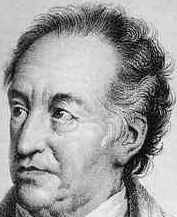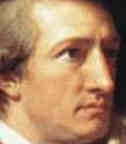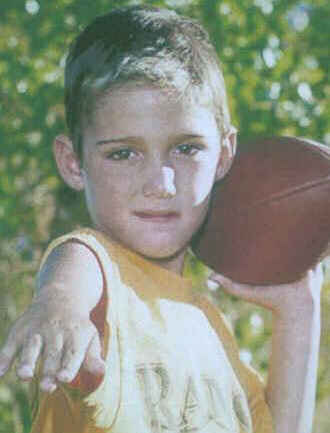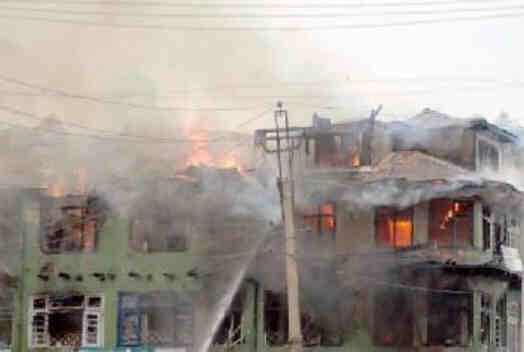Births
which occurred on a 28 August: ^top^
1952 Rita Dove, Pulitzer Prize-winning poet.
1939 John
Frank Charles Kingman, English mathematical statistician. Author
of Poisson Processes (1993).
| 1937 The Toyota Motor Company,
Ltd., originally a division of the Toyota Automatic Loom Works, becomes
a corporation. The company underwent huge expansion in the 1960s and
1970s, exporting its smaller, more fuel-efficient cars to countless
foreign markets. During this period, Toyota also acquired Hino Motors,
Ltd., Nippondenso Company Ltd., and Daihitsu Motor Company, Ltd. Toyota
has been Japan’s largest automobile manufacturer for several decades
and is headquartered in Toyota City, Japan. |
1924 Janet Frame NZ, novelist (Intensive Care, Owls Do
Cry)
1916 C Wright Mills sociologist, writer (The
Power Elite)
1913 William Robertson Davies,
novelist and playwright whose works offer penetrating observations
on Canadian provincialism and prudery.
Davies
was the son of a publisher and politician who owned the Canadian newspaper
the Peterborough Examiner. He attended college in Ontario and later
in Oxford, England. He stayed in England after finishing his degree
and worked for two years acting, directing, and teaching at London's
Old Vic theater. He tried his own hand at writing drama in the 1940s
and 1950s, without enormous success. When he returned to Canada, he
became literary editor of a Toronto magazine, then edited for the
Peterborough Examiner from 1962 to 1963. He began teaching English
for the University of Toronto in 1960 and continued for more than
20 years.
Meanwhile, he wrote
novels, turning out more than 30 books of fiction, plus essays, articles,
and nonfiction books. He was best known for his three trilogies, most
notably the Deptford trilogy, including Fifth Business
(1970), The Manticore (1972), and World of Wonders
(1975). The trilogy followed the intertwined lives of three men from
the small Canadian town of Deptford.
His other well-know works included the Salterton trilogy
in the 1950s, set in the provincial Canadian town of Salterton and
dealing with fictional small-town events like a chaotic production
of The Tempest, a small-town family feud, and a young woman
training to be an opera singer. Later works included What's Bread
in the Bone (1985), as well as many other novels and nonfiction
books. Davies became the first Canadian admitted to the American Academy
and Institute of Arts and Letters. He died on 2 December 1995. |
1910 Paul
Turán, Budapest Jewish mathematician who died on 26
September 1976p
1908 Roger Tory Peterson NY, ornithologist,
author of the innovative bird book A Field Guide to Birds.
1907 United Parcel Service begins service, in Seattle
1906 Sir John Betjeman poet laureate of England (Mt Zion)
1903 Bruno Bettelheim, Austrian psychologist, educator
of autistic and emotionally disturbed children,. writer (Uses of Enchantment)
1896 Liam O'Flaherty, Irish novelist and short-story
writer.
1883 Jan
A. Schouten who would work on tensor analysis and its applications.
1878 George Hoyt Whipple US, astrophysicist (Nobel-1934)
1867 Maxime
Bôcher US mathematician who died on 12 September
1918. He worked on differential equations, series, and algebra.
1862
Albrecht Adam, German artist born in 1786.—
1842
Peter Fendi, Austrian painter born on 4 September 1796. —
Guards on
Maneuvers (1839) )
1833 Sir Edward Burne-Jones
England, Pre-Raphaelite painter/designer
1833 Edward Coley
Jones “Burne~Jones”, British Pre-Raphaelite
painter, illustrator, and designer who died on 17 June 1898. — MORE
ON BURNE~JONES AT ART “4” 2~DAY
— LINKS
— King
Cophetua and the Beggar Maid — Love
Among the Ruins — The
Rock of Doom — An
Angel Playing a Flageolet — The
Godhead Fires — The
Annunciation — The
Tree of Forgiveness — Group
of Four Women — The
Golden Stairs — The
Beguiling of Merlin — Pan
and Psyche — Olive
Maxse (sketch) — The
Three Graces — The
Briar Rose: study for The Garden Court — Pygmalion
and the Image: I - The Heart Desires — Pygmalion
and the Image: II - The Hand Refrains — Pygmalion
and the Image: III - The Soul Attains — Hope in Prison
— Clara
von Bork and Sidonia
von Bork
1813 Jones Very, author. VERY ONLINE: Essays
and Poems , Essays
and Poems
1812 Rudolf von Alt, Viennese
painter, draftsman, and printmaker who died on 12 March 1905. — more
1810 Constant Troyon, French Barbizon
School painter, specialized in Landscapes
and Animals,
who died on 20 March 1865.— MORE
ON TROYON AT ART “4” 2~DAY —
LINKS
— Un
Paysan dans sa Charrette (main detail _ ZOOM
TO FULL PICTURE) — Retour
du Travail (main detail _ ZOOM
TO FULL PICTURE) — Paysage
Pastoral en Touraine (ZOOM)
— Un
Garde-Chasse Mène ses Chiens dans un Bois (ZOOM)
— Le
Vacher — Scène
Pastorale — Landscape
with Oxen — Approaching
Storm — Beach
At Trouville — La
Vallée — Plowing
1806 Jacob Thompson, British artist who died on 27 December
1879.
1801 Cournot,
mathematician
1799 Auguste-Xavier Leprince, French
painter and lithographer who died on 24 December 1826. — more
1796 Irénée-Jules
Bienaymé, Parisian mathematician who died on 19 October
1878. He worked on statistics and probability.
1774 Elizabeth
Ann Bayley Seton, founder of the Sisters of St. Joseph and the
first US-born saint.
1789 Dionys Nymegen (or Nijmegen),
Dutch painter born on 07 April 1795.
 1832 1832
 Johann
Wolfgang von Goethe,
in Frankfurt, Germany. Johann
Wolfgang von Goethe,
in Frankfurt, Germany.
Goethe
would grow up to be a poet, playwright, novelist, and social philosopher,
the greatest figure of the German Romantic period, best known for
Faust.
He died on 22 March 1832.
— C'est à Francfort sur le Main
que nait l'un des plus grands poètes allemands. Il fut aussi
géologe, botaniste et naturaliste. Il découvrit l'os intermaxillaire.
Parlant sept langues, musicien, Il a excercé une grande influence
sur la littérature européenne. Son oeuvre capitale, Faust,
est mondialement connue.
— Throughout his life Goethe was
interested in a variety of studies and pursuits. He made important
discoveries in connection with plant and animal life, and evolved
a non-Newtonian theory of the character of light, which was viewed
with suspicion by scientists. In literature he gained fame early with
The Sorrows of Young Werther (1774), but his most famous work was
the poetic drama in two parts, Faust.
Goethe was born in Frankfurt am Main, the first child of a lawyer
Johann Caspar Goethe, and Katherine Elisabeth Textor, the daughter
of the mayor of Frankfurt. Goethe had a comfortable childhood and
he was greatly influenced by his mother, who encouraged his literary
aspirations. After troubles at school, he received at home an exceptionally
wide education. At the age of 16, Goethe began to study law at Leipzig
University (1765-1768), and he also studied drawing under Adam Oeser.
An unhappy love affair inspired
Goethe's first play, The Lover's Caprice (1767). After a
period of illness, he resumed his studies in Strasbourg (1770-1771).
Goethe may have contracted syphilis. He practiced law in Frankfurt
(1771-1772) and Wetzlar (1772). He contributed to Frankfurter
Gelehrte Anzeigen (1772-1773), and in 1774 he published his first
novel, the self-revelatory Die Leiden des jungen Werthers.
It narrates Werther's hopeless affair with Lotte Buff, the fiancée
of a colleague. In the end the melancholic Werther commits suicide,
thus becoming the prototype of the Romantic hero.
Goethe's youth was emotionally hectic to the point that he sometimes
feared for his reason. He was recognized as a leading figure in the
Sturm und Drang, which celebrated the energetic Promethean quality
of the individual as opposed to the rational idealistic ideal of the
Enlightenment. Goethe's poem Prometheus, with its insistence
that man must believe not in gods but in himself, might be seen as
a motto for the whole movement.
After a relaxing trip to Switzerland, Goethe made a decisive break
with his past. In 1775 he was welcomed by Duke Karl August into the
small court of Weimar, where he worked in several governmental offices.
Occasionally he read aloud his texts to a selected group of persons,
among them the Duke and the two Duchesses.
During
this period Goethe did not have much time to publish fiction. He was
a council member and member of the war commission, director of roads
and services, and managed the financial affairs of the court. His
great love in this period was Charlotte von Stein, an older married
woman, but the relationship was platonic. However, Goethe's scientific
researches were more successful. He discovered the human intermaxilarry
bone (1784), and formulated a vertebral theory of the skull.
In 1786-1788 he visited Italy. He drew
statues and ruins, collected antique and botanical samples, and was
shocked by the primitive power of an ancient Greek temple —
Renaissance art did not interest him. JHW Tischbein portrayed him
as Goethe in The Roman Campagna. The journey ended Goethe's
celibacy and inspired his play Iphigenie auf Tauris, and
Römische Elegien, sensuous poems relating partly to
Christiane Vulpius, who became Goethe's mistress in 1789. The ancient
monuments he saw in Italy significantly influenced his growing commitment
to a classical view of art. His emotional dependence on Charlotte
ended, and in spite of public pressure, he continued to live happily
unmarried with Christiane. Goethe was released from day-to-day governmental
duties to concentrate on writing, although he was still general supervisor
for arts and sciences, and director of the court theatres (1791-1817).
In the 1790s Goethe contributed
to Friedrich von Schiller´s journal Die Horen, published
Wilhelm Meisters Lehrjahre in 1795-1796, and continued his
writings on the ideals of arts and literature in his own journal Propyläen.
Wilhelm Meister's story had preoccupied the author for many years.
Wilhelm is disillusioned by love, he starts actively to seek out other
values, and becomes an actor and playwright. Whereas Werther's life
ended in despair, Meister has a more optimistic spirit. At the end
he says: "... I know I have attained a happiness which I have
not deserved, and which I would not change with anything in life."
During the French Revolution Goethe
reported in letters to his family his inconveniences, when he was
forced to leave his home and dear garden after the French army attacked
Prussia. He also saw killings and looted villages, and wrote in the
middle of cannon fire. Although Goethe supported freedom and progress,
he wanted to preserve the bourgeois or his artistic-individualistic
way of life. The goals of the Revolution were embraced with enthusiasm
by most of the German intelligentsia, including Kant, Schiller, and
Friedrich Schlegel. Goethe remained creative during his last period.
He married in 1806 Christiane Vulpius, with whom he had lived nearly
18 years, wrote his autobiography, Poetry and Truth (1811-1833),
and completed the novel Wilhelm Meisters Wanderjahre (1821-1829).
The first part of Goethe's masterwork,
Faust, appeared in 1808, and the second part in 1832. Goethe
had worked for most of his life on this drama. It is based on The
Tragical History of Doctor Faustus by Christopher Marlowe
[bapt. 26 Feb 1564 – 30 May 1593], and depicts a disillusioned
scholar, who makes a pact with Satan. The original figure in the Faust
legend was Gregorius Faustus (or Gregorius Sabellicus, Faustus Junior
[1480-1511], a seeker of forbidden knowledge. His true identity is
not known, but he claimed to be an astrologer, expert in magic, and
an alchemist. This legend attracted Christoper Marlowe, who offered
in his play a psychological study of the battle between good and evil.
Marlowe's play ends with the protagonist's damnation. Goethe's story
created a new persona for the Devil — Mephistopheles was a gentleman,
who had adopted the manners of a courtier. Faust's lust for knowledge
is limitless and he makes a contract with Mephistopheles: he will
die at the moment he declares himself satisfied. In the first part
Faust loses Margaret, an innocent girl, who is condemned to death
for murdering her illegitimate child by Faust. In the philosophical
second part Faust marries Helen of Troy and creates a happy community.
Faust is finally satisfied, but Mephistopheles loses his victory,
when angels take Faust to heaven.
From 1791 to 1817 Goethe was the director of the court theaters. He
advised Duke Carl August (on mining) and Jena University, which for
a short time attracted the most prominent figures in German philosophy,
including Hegel and Fichte. He edited Kunst and Altertum
(1816-1832) and Zur Naturwissenschaft (1817-1824). In 1812
Goethe met Beethoven in Teplitz. Beethoven had admired Goethe already
in his youth, although he considered Goethe's attitude toward the
nobility too servile. Beethoven composed several music pieces based
on the author's texts, among them Egmont. Franz Schubert's
(1797-1828) first Lieder masterpiece, Gretchen am Spinnrade,
took the words from Faust, but Goethe did not much appreciate Schubert's
musical attempts.
At the age of
74 Goethe fell in love with the 19-year old Ulrike von Levetzow. He
followed her with high hopes from Marienbad to Karlsbad, and then
returned disappointed to Weimar. There he wrote The Marienbad
elegy, the most personal poem of his later years. Goethe died
in Weimar. He and Schiller, who died over a quarter of a century earlier,
are buried together, in a mausoleum in the ducal cemetery.
— 1773 Portrait
of Goethe by Johann Daniel Bager [1734 – 17 Aug 1815].
— 1787 Goethe
in the Roman Campagna by Johann
Heinrich Wilhelm Tischbein. — Photo
of 1789 bust of Goethe by sculptor Alexander
Trippel [1744-1793]. — 1823 Portrait
of Goethe by Orest
Kiprensky.
GOETHE ONLINE
— Faust.
Der Tragödie zweiter Teil in fünf Akten — Hermann
und Dorothea — Das
Märchen (1795) — Novelle
(1826)
(in English translations):
— Egmont
_ Egmont
—
Faust — Hermann
and Dorothea _ Hermann
and Dorothea —
The Poems of Goethe —
The Sorrows of Young Werther — Das
Märchen – A Fairy Tale (1795) — Novella
(1826) |
1710 Giuseppe Vasi, Italian engraver and painter who died
on 16 April 1782. — more
1689 Alexander (Alart) Coosemans, Flemish artist born on
19 March 1627.
1623 Frederick (Friedrich) van Valkenborch
(or Falkenburg), Flemish artist born in 1570 (or 1556?) |
 On
a 28 August:
On
a 28 August:  2002
Nicholas Michael Farber, 9 [< photos >], is abducted
at 02:00 from his father's rented room in Palm Desert, California, by two
gunmen, the taller one with a nylon stocking over his heads, as phoned at
02:08 by his father, Michael Farber, manager of a Mexican restaurant, who
is beaten up.
2002
Nicholas Michael Farber, 9 [< photos >], is abducted
at 02:00 from his father's rented room in Palm Desert, California, by two
gunmen, the taller one with a nylon stocking over his heads, as phoned at
02:08 by his father, Michael Farber, manager of a Mexican restaurant, who
is beaten up.  On 30 August 2002 Nicholas would be found at a campground in Jamul, California,
with his mother [< photo] and Michael J. Riley, 48, who
are both arrested. Riley is not one of the two kidnapping gunmen, but he
is wanted for financial crimes in Nebraska and in Arizona.
On 30 August 2002 Nicholas would be found at a campground in Jamul, California,
with his mother [< photo] and Michael J. Riley, 48, who
are both arrested. Riley is not one of the two kidnapping gunmen, but he
is wanted for financial crimes in Nebraska and in Arizona. Deaths
Deaths
